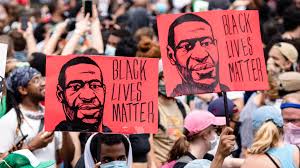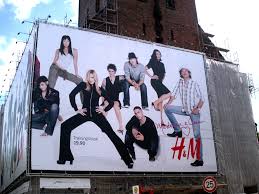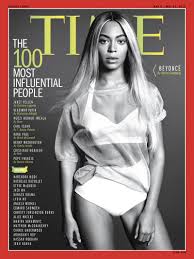by Sabyn Javeri Jillani

In the early 2000s, when I was expecting my first child, I became acutely aware of ‘skin’. Not only had my skin stretched beyond imagination without splitting, but it had taken on a dark glow that made my brownness stand out amidst the light-skinned London neighbourhood I lived in. Pregnancy cravings for desi food meant that I made frequent trips to the nearby Asian area of Tooting, where I would often bump into elderly Asian aunties. These women would take one look at my pale-skinned husband and offer me sincere advice to drink milk with saffron so that the child may take after his father. I would jokingly retort that if milk made skin tone lighter, why would buffaloes be black? But afterwards, I would mull over these little ‘well-meaning’ acts of microaggression and wonder if my dark skin tone made me any less worthy.
I was reminded of this when, in the wake of the tragic killing of George Floyd and the resurgence of the Black Lives Movement, Unilever dropped the word ‘fair’ from its skin-lightening cream, ‘Fair & Lovely’. But if the idea was to support the fight against racism, why not just drop the skin-lightening cream? The answer lies in the complex tangle of colonialism and colourism — each a legacy of the other. Like many African Americans who have varying skin tones due to the history of slavery and unfair sexual exploitation, many in South Asia, due to the advent of Persian and Central Asian invaders and later through the 200-year rule of the British, have complexions that range from chocolate brown to milky white.
This history of slavery and colonialism is further complicated by an internalization of racial bias, for many still equate lighter skin with a brighter future. Just as ‘English’, the language of the colonizer is widely embraced as the language of opportunity in South Asia, a lighter skin tone is deemed to be the gateway to better prospects, whether in marriage or in career. As Fanon explains in Black Skin, White Masks (1952), “The fact of having to speak nothing but the other’s language when the other was the conqueror, ruler, and oppressor was at once an affirmation of him, his worldview, and his values; a concession to his framework; an estrangement from one’s history, values and outlook.” Fanon’s reflections on the impact of colonization and whiteness through the observance of language and (inter)racial interaction and relationships are still relevant today because they problematize the internalization and reproduction of whiteness among postcolonial black people.

Decolonizing why we consciously or unconsciously reproduce these racist patterns of behaviour through colourism is not a straightforward process. Unlike the United States, where racial prejudice systematically affects Black Americans, the marginalization of those with dark(er) skin is often, unapologetically, accepted as a social norm in the postcolonial world. The roots of this lie in what bell hooks calls ‘internalized racism.’ For as hooks writes in Black Looks: Race and Representation (2015), “No longer is this apparent adoration and worship of ideas of beauty springing from a white supremacist aesthetic, questioned”. In fact, aspiring to white aesthetics of beauty has become normalized in South Asia, as can be seen by the ready availability of skin-lightening products, such as ‘Fair& Lovely’, in supermarkets, salons and even pharmacies.
In South Asia, the media and movies promote this colourism (shadism) further by casting dark-skinned actors or brownfacing fair-skinned ones to portray the marginalized (therefore reinstating a stereotype). Rural, working class, low-caste or villainous and rebellious character are often cast as dark skinned, and in contrast, righteous heroes and virtuous heroines are fair skinned or made up to look fair-skinned with excess powder or bright lights. By default, beauty in songs and cinema has become associated with fair skin and virtue. An example of this is how the word ‘Gori’ (fair-skinned) is synonymous with beauty and innocence in most Hindi and Urdu songs, as ‘fair’ is in classic English poetry.

Just like Bollywood is full of fair, young damsels epitomizing beauty standards, it’s not unusual to find adverts in the Asian media showing a dejected and sad looking dark-skinned woman who promptly gets a marriage proposal or a job offer after using a skin lightening cream. A recent example of this is the 2016 campaign by the Asian company Seoul Secret selling whiteness pills that had the tagline: “Whiteness makes you win”, promoting whiteness as the ultimate aspiration in a country where the majority of people are dark skinned. There are movie stars with a following of millions, advocating fairness creams for both men and women — somewhat ironic, as these very same movie stars have been tweeting #blacklivesmatter while simultaneously promoting attitudes that look down upon black skin. Fairness potions, lotions, injections and pills that promise to make your skin light are readily available over the counter. All this helps normalize colourism, for in a society where you have job adverts which clearly state that that the applicant must be fair skinned and pleasant looking, or matrimonial columns which unashamedly ask for tall, fair, and virgin brides, why would you not equate fair skin with a better fortune? How, then, can you justify the inherent bias against dark skin, be it your own, when you are taught early on to aspire to whiteness? It becomes a vicious cycle of subconscious colourism which not only creates mistrust amidst people of colour against their own kind, it also limits our ambitions. For as James Baldwin wrote, “You know, it’s not the world that was my oppressor, because what the world does to you, if the world does it to you long enough and effectively enough, you begin to do to yourself”.
Baldwin’s words remind me of how, as a young schoolgirl in Karachi, we were not allowed to play outdoors as the teachers felt the sun would ruin our complexion. Girls did gymnastics or embroidery indoors while boys played cricket or football in the grounds. Not only were the seeds of sexism sowed early on, but colourism and its consequences on one’s desirability were clearly pronounced. In plays and assemblies, fair-skinned children were always the first to be chosen, with talent being second on the criteria. Little wonder, then, that those with lighter skin grew up feeling entitled to succeed while those with darker skin seemed content to stay in the shadows, colourism having eroded their self-perception. A recent social media campaign (Twitter: #LGSdefence #discrimination) by students from an elite school in Lahore have highlighted colourism (amidst other issues of bullying and harassment) in Pakistani schools.
Another such social media campaign by Texan photographer Pax Jones, #Unfair&Lovely, promotes reclaiming dark skin by challenging colourism. The #Unfair&Lovely movement is “especially for the dark-skinned individuals who are further other-ed for reasons in addition to their complexion,” says Jones in an interview to Self magazine (n.d). Addressing people of colour who are “queer, trans, non-binary, poor, differently-abled…” amidst others, she explains, “We’re taught that it’s impossible to be all of these things and beautiful”. #DarkisBeautiful is another such initiative by social activist Kavitha Emmanuel. Founder of ‘Women of Worth’, an Indian NGO that is standing up to bias toward lighter skin, the Dark Is Beautiful campaign was launched in 2009. It is not “anti-white”, Emmanuel says in an interview to the Guardian (n.d), “but about inclusivity — beauty beyond colour”. It carries celebrity endorsement, most notably from Bollywood actor Nandita Das, and provides a forum for people to share their personal stories of skin colour bias. The campaign runs media literacy workshops and advocacy programmes in schools to counteract colour bias. Emmanuel says colourism not only occurs within the classroom but even in school textbooks, where a picture of a fair-skinned girl might be labelled “beautiful” and a darker one “ugly”, thus instilling colourism early on.
In Pakistan, activist Fatima Lodhi has been actively campaigning the ban of potentially cancerous skin lightening creams through her consciousness-raising campaign, ‘Dark is Divine’. Lodhi has written about the prejudice she faced as a child: “I never got a chance to become a fairy in my school plays because fairies are supposed to be fair-skinned” (Guardian, n.d). Now, she leads sessions at schools to make students more aware of skin colour discrimination. This campaign gained some traction with the Pakistani Minister for Climate Change, Zartaj Gul Wazir, who announced impending action against international and local whitening creams in 2019. Results of a recent testing showed that 56 out of 59 creams contained excessive amounts of mercury (The News, n.d). However, the action to ban these creams is still pending.

One reason that these products are hard to ban, however injurious to our bodies and to our mental health, is because they are part of a large and powerful capitalist network. It is easier to drop the ‘fair’ from skin lightening creams or rebrand them as ‘brightening’ or ‘glowing’ creams, than to address the colourism and racism they promote. In an article in the US News & World Reports (n.d), Sunil Bhatia quoted an ‘AC Nielsen’ report that estimated, “Indians in 2010 consumed more than 233 tons of skin-whitening products at a cost of $432 million, more than they spent on Coca-Cola drinks”. He went on to write: “These numbers are stunning given that most of the people in the country are dark or brown-skinned”.

But is it really surprising, when we have mass advertising that capitalizes on people’s self-esteem by promoting unrealistic standards of beauty that are anything but inclusive? Globalisation has only accelerated this with branches of Debenhams and H&M and other Western highstreet brands showcasing their wares in Asia and MENA through huge billboards of fair-skinned, long-legged models that defy Asian curves or the unruliness of Asian and African hair. In the 2014 documentary, ‘The Illusionists’, which explores the globalization of Eurocentric beauty images, Susie Orbach, states: “Just as English has become the lingua franca of the world, so the white, blondified, small-nosed, pert-breasted, long-legged body is coming to stand in for the great variety of human bodies that there are”.

The ideals of beauty are constantly being homogenized through a white lens. It reminds me of how, in the video Cultural Criticism And Transformation (1997), hooks uses the term ‘White Supremacist Capitalist Patriarchy’ instead of racism when she says, “I wanted to have some language that would actually remind us continually of the interlocking systems of domination that define our reality.” hooks (2015) explores this internalised racism further when she writes, “Following in the wake of the success of drag queen RuPaul — who created an image of black ‘female’ beauty, affirming the aesthetic of long blonde straight hair, an image that suggests ‘if I cannot be a white woman I can at least look like a copy of the real thing’ — black female performers, sports figures, movie stars and singers all began to go blonde. This set the stage for Beyonce, a young black female singer, to rise to unprecedented stardom and wealth. On the cover of Time magazine as one of the one hundred most influential people in the world, she dons her long, bone-straight blonde hairdo…” (9).
How, then, do we reclaim our skin and decolonise our gaze? If we don’t inherently believe that black is beautiful and continue to tolerate skin lightening or brightening creams and injections, how then, do we convince others of something that we are not convinced of ourselves? For as hooks writes, “Indeed, a fundamental task of black critical thinkers has been the struggle to break with the hegemonic modes of seeing, thinking, and being that block our capacity to see ourselves oppositionally, to imagine, describe, and invent ourselves in ways that are liberatory. Without this, how can we challenge and invite non-black allies and friends to dare to look at us differently, to dare to break their colonizing gaze?”
This is a tough question that needs some tough introspection. While we chant slogans of #blacklivesmatter, we must also learn to take ownership of the colourism that exists amidst our own communities in exerting white supremacy and internalizing racism. Social media campaigns to celebrate dark skin and calling out those who shame people for their darker complexion, be it the celebs endorsing skin-lightening potions or grannies recommending saffron milk to pregnant women, is a start. But the real change is to challenge those inherent beliefs that have normalized colourism in our society. For even the smallest acts of discrimination contribute to wider global issues and generational beliefs that are recklessly passed on through small comments and microaggressions, promoting colourism and racism. As we come together to support Black Lives Matter, challenging the normalization of ‘Fair and Lovely’ or ‘Whiteness makes you win’ — be it within ourselves or the wider world — could make all the difference in combatting racism on a global scale. For it is important not to let colourism get under your skin.
